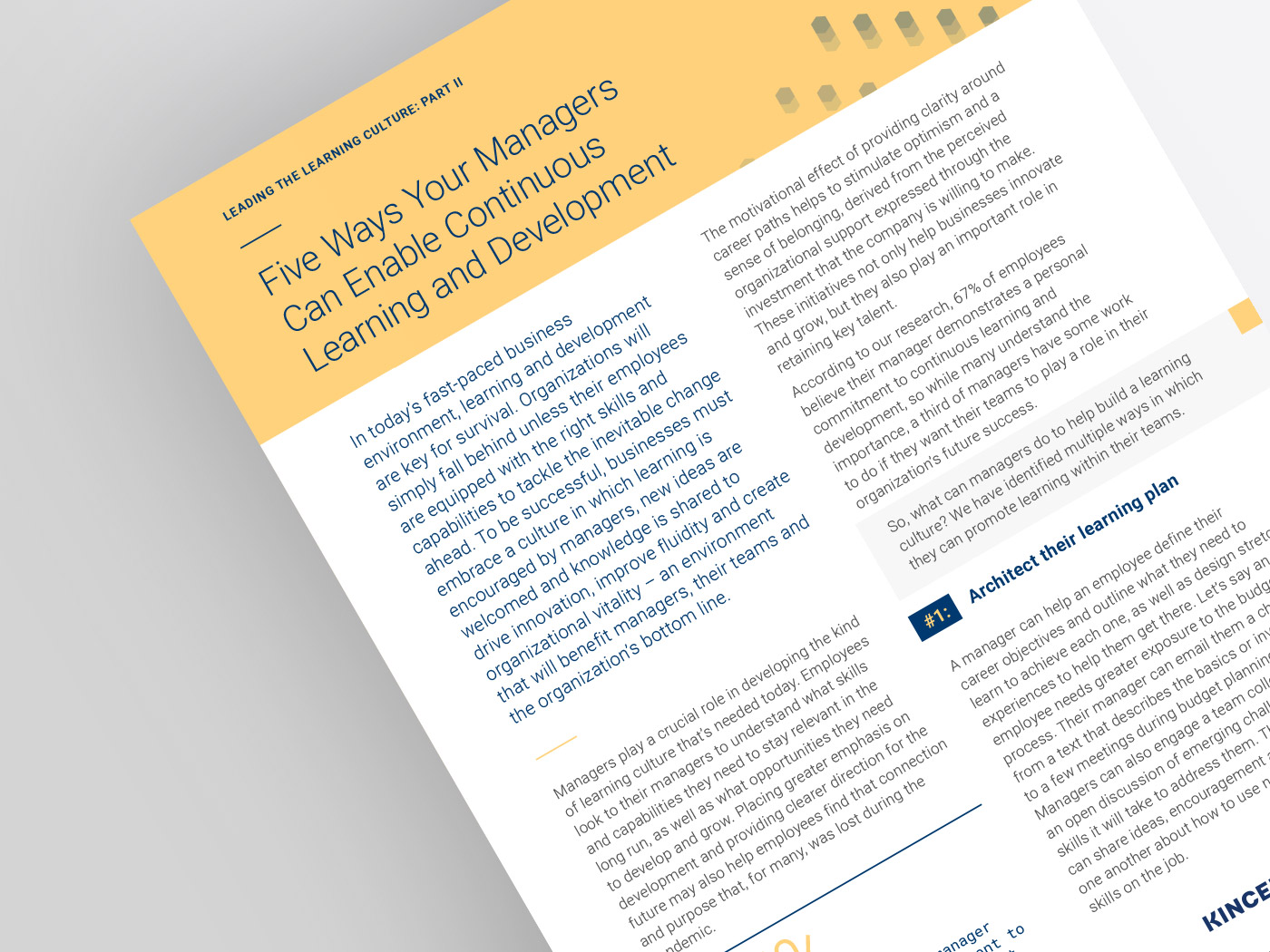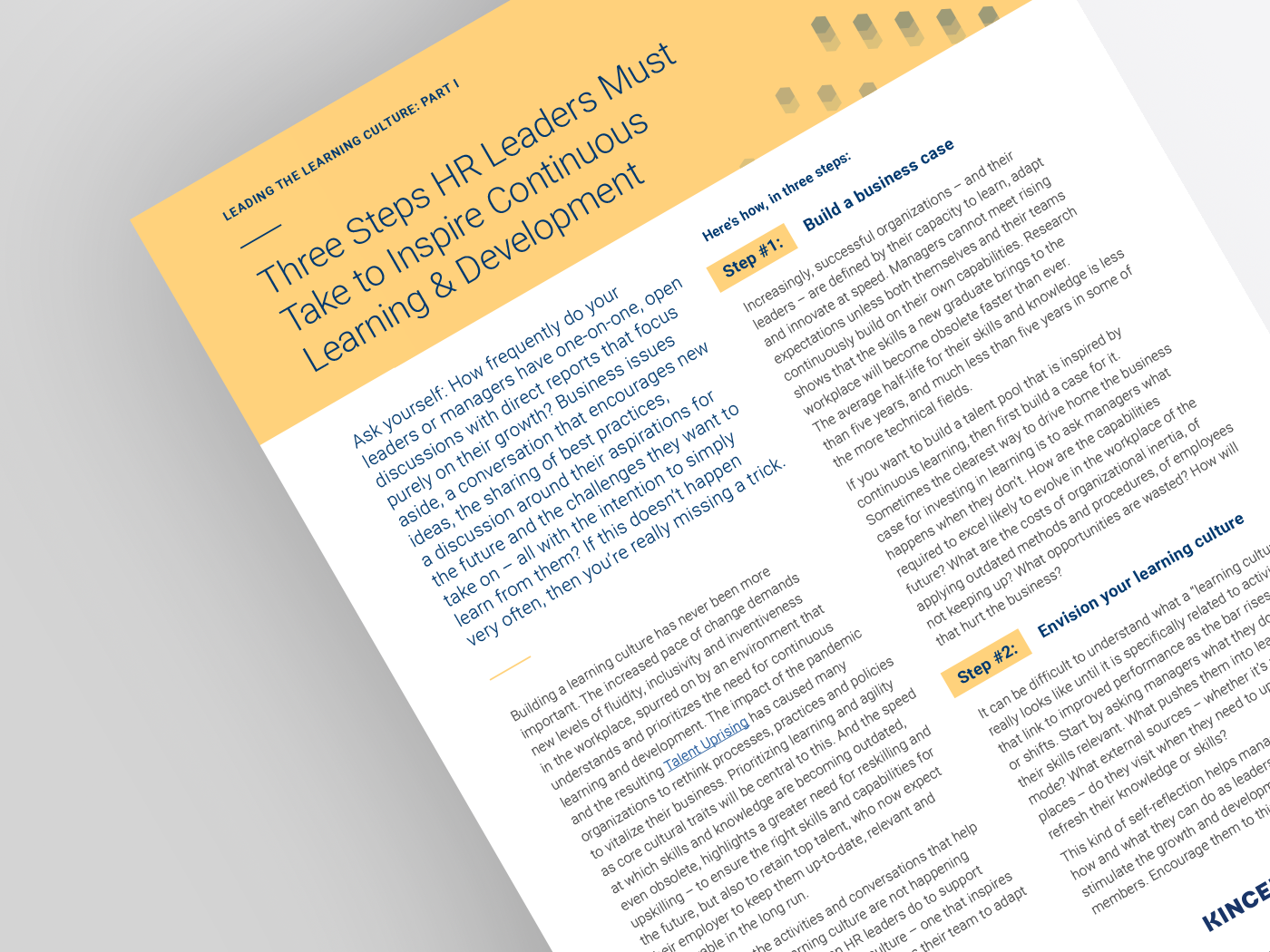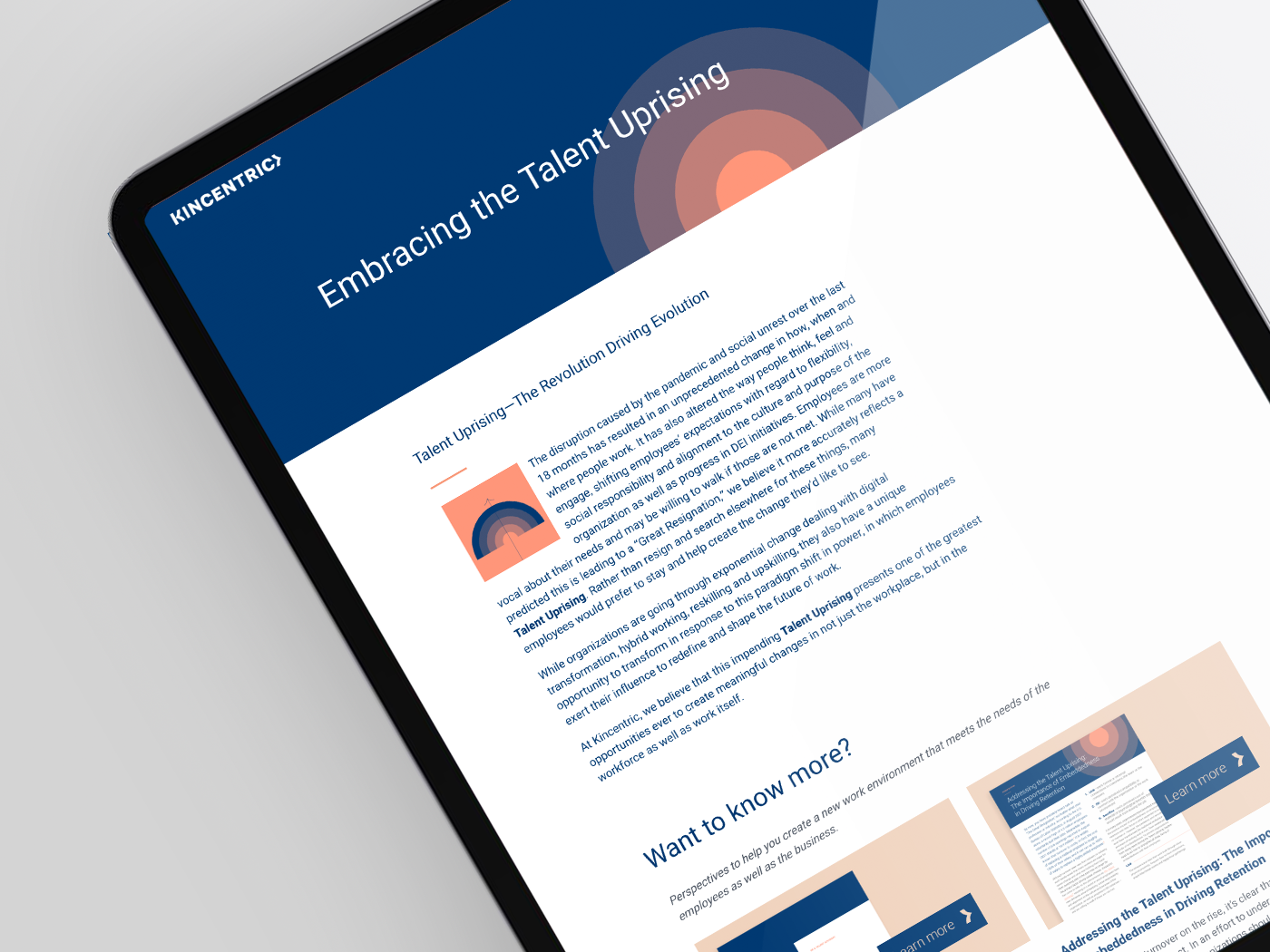
In today’s fast-paced business environment, learning and development are key for survival. Organizations will simply fall behind unless their employees are equipped with the right skills and capabilities to tackle the inevitable change ahead. To be successful, businesses must embrace a culture in which learning is encouraged by managers, new ideas are welcomed and knowledge is shared to drive innovation, improve fluidity and create organizational vitality – an environment that will benefit managers, their teams and the organization’s bottom line.
Managers play a crucial role in developing the kind of learning culture that’s needed today. Employees look to their managers to understand what skills and capabilities they need to stay relevant in the long run, as well as what opportunities they need to develop and grow. Placing greater emphasis on development and providing clearer direction for the future may also help employees find that connection and purpose that, for many, was lost during the pandemic.
67%
of employees believe their manager demonstrates a personal commitment to continuous learning and development
The motivational effect of providing clarity around career paths helps to stimulate optimism and a sense of belonging, derived from the perceived organizational support expressed through the investment that the company is willing to make. These initiatives not only help businesses innovate and grow, but they also play an important role in retaining key talent.
According to our research, 67% of employees believe their manager demonstrates a personal commitment to continuous learning and development, so while many understand the importance, a third of managers have some work to do if they want their teams to play a role in their organization’s future success.
So, what can managers do to help build a learning culture? We have identified multiple ways in which they can promote learning within their teams.
A manager can help an employee define their career objectives and outline what they need to learn to achieve each one, as well as design stretch experiences to help them get there. Let’s say an employee needs greater exposure to the budgetary process. Their manager can email them a chapter from a text that describes the basics or invite them to a few meetings during budget planning season. Managers can also engage a team collectively with an open discussion of emerging challenges and the skills it will take to address them. The team, in turn, can share ideas, encouragement and coaching with one another about how to use new knowledge and skills on the job.
What Can Managers Do?

Self-awareness is key to effective learning. If employees don’t know where their skills fall short, then they won’t understand how those gaps are holding them back. Nor can they leverage their strengths if they aren’t sure what they are, or how they’ve shifted relative to the new challenges. Leaders can improve employee self-awareness by objectively appraising strengths and limitations and providing critical feedback. But this only works if this feedback is fact-based, and if there’s a high level of trust in the boss’s perspective.
What Can Managers Do?
Most of your workforce are likely to be doing something in pursuit of personal or professional development. It might be formal education; it might be self-education via books, clubs or online communities; it might involve travel to conferences or networking events. Leaders must recognize that investing in a valued employee’s continuing education and professional development is money well spent – as well as investing their own time in coaching and counselling.
What Can Managers Do?
The goal of a learning culture is to equip employees to succeed in the future, and to play increasingly important roles in the organization’s success. It shouldn’t be a random process. A forward-thinking boss understands how their business is evolving and what they will need from employees to meet future objectives. This can then help them prepare for changing circumstances and expectations.
What Can Managers Do?

A manager often has access to information their employees don’t have, which means they can identify opportunities employees wouldn’t otherwise know about. For example, let’s say a manager has someone on their team who’s perfect for an assignment in another region and would learn a lot from the process. The manager can open the door with a strong recommendation, followed by an introduction. Even if the leader hasn’t gone through specific education and training programs, they can help their team members identify which opportunities will add value and help them get closer to achieving their goals.
What Can Managers Do?
There can no longer be an end point for learning and development. To survive and thrive in the future, both employers and employees need to continuously embrace new skills, knowledge and opportunities, with managers playing a key role in encouraging and nurturing continuous learning within their teams. Organizations have an opportunity to take learning and development to the next level, to enhance their employee skill sets, invigorate their talent and ultimately drive better business results. Don’t forget the critical role that managers play to make this happen.


Learn how to create a new work environment that meets the needs of both employees and the business.

Want the latest insights delivered straight to your mailbox?